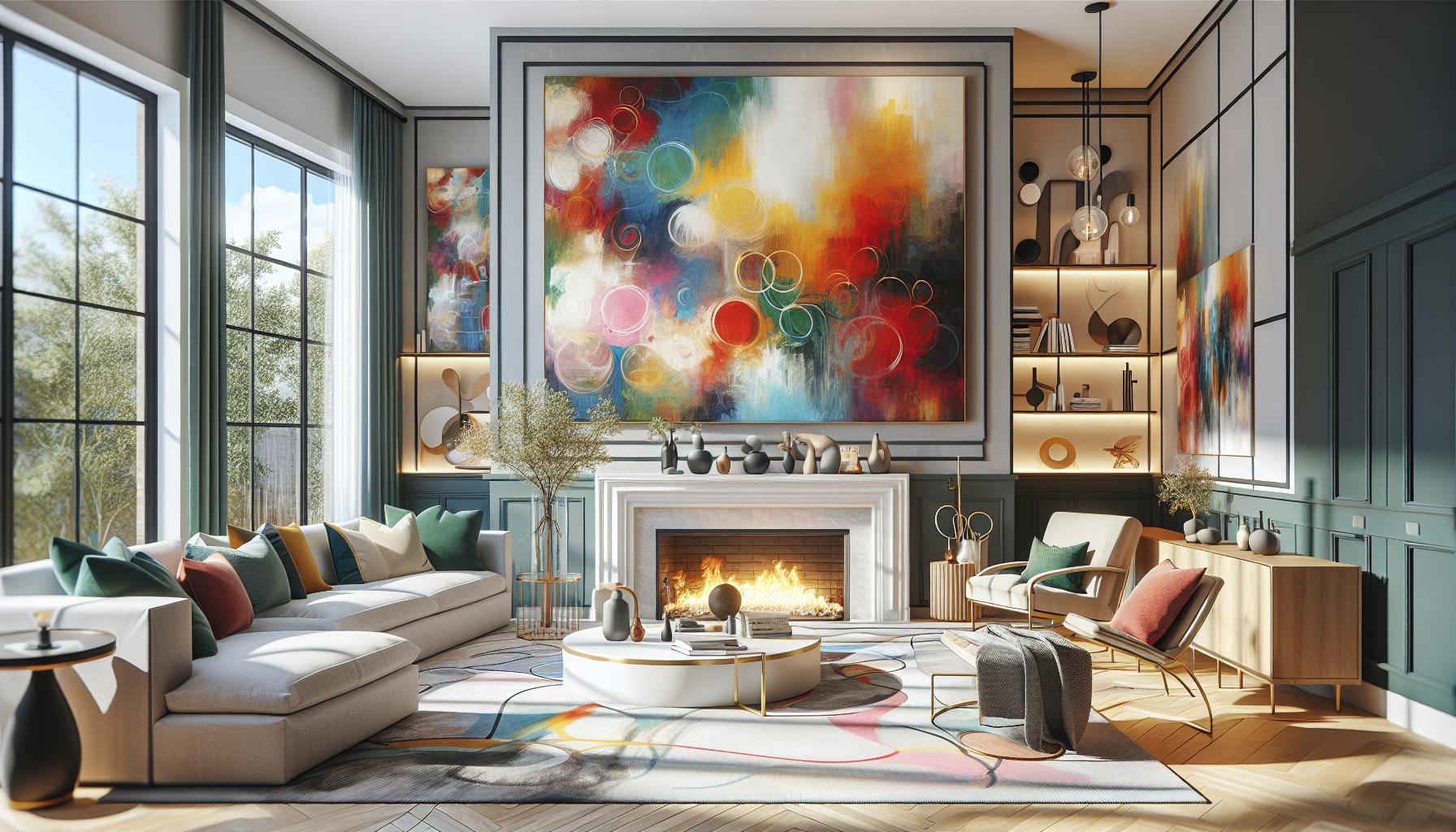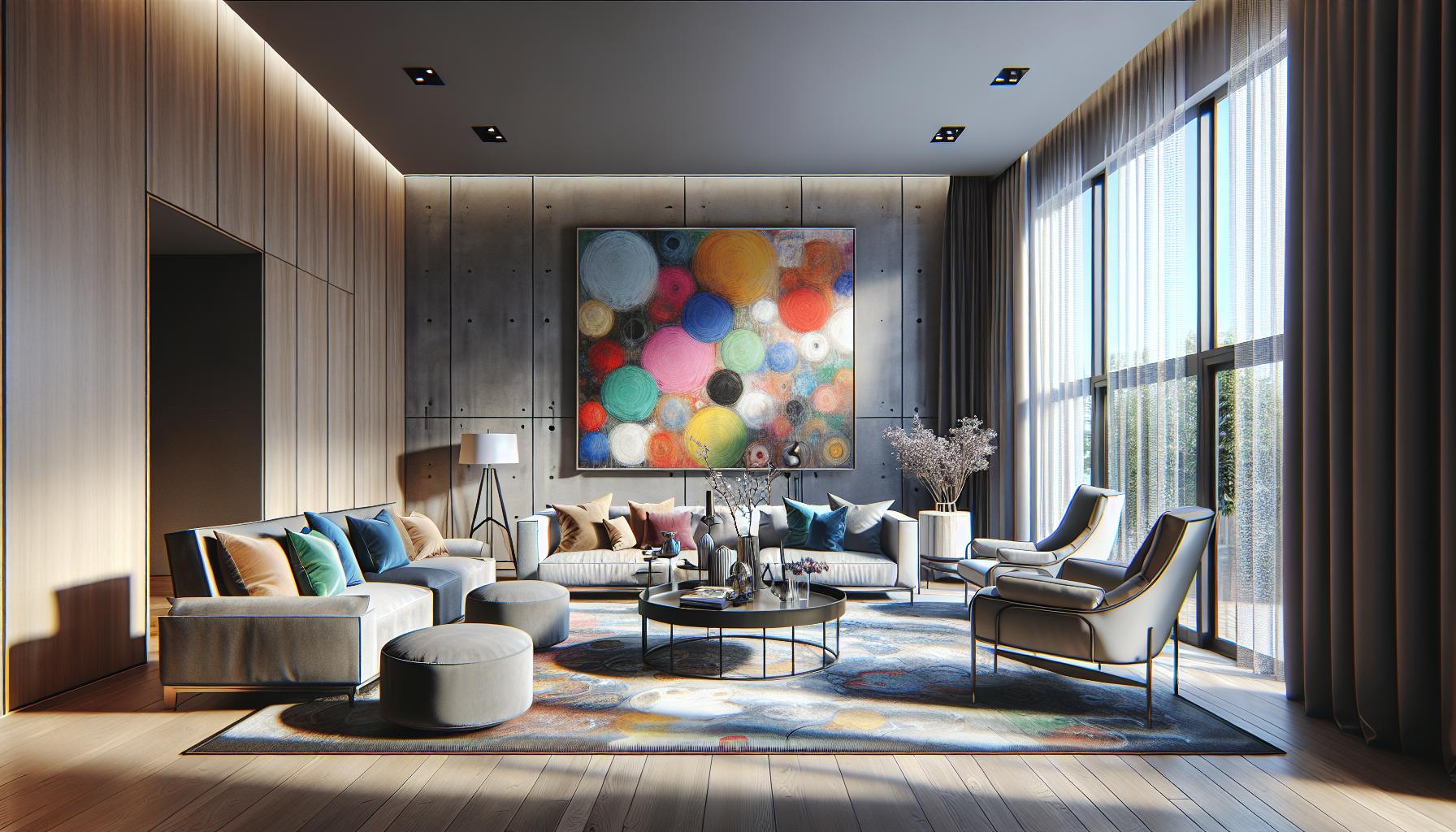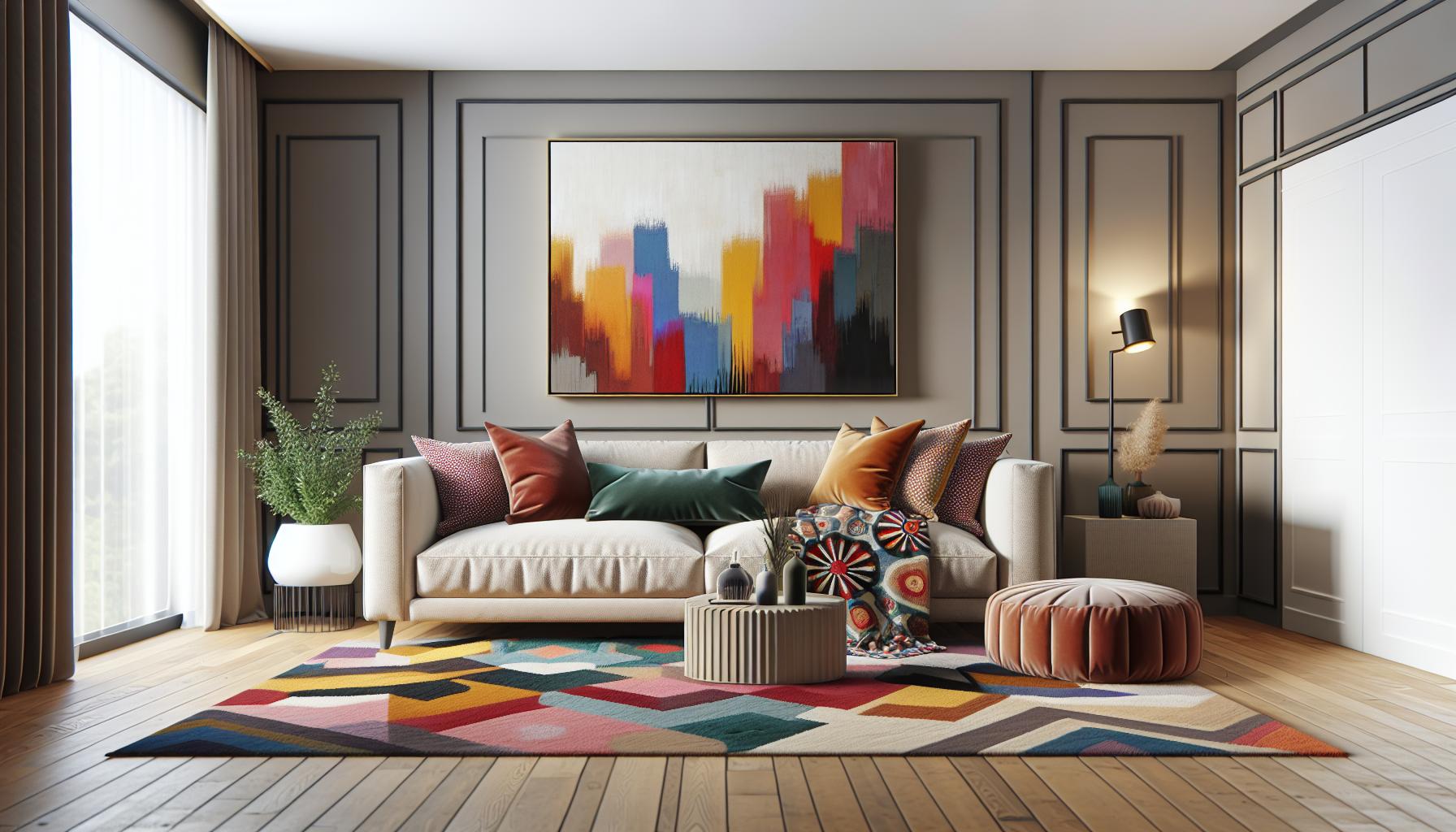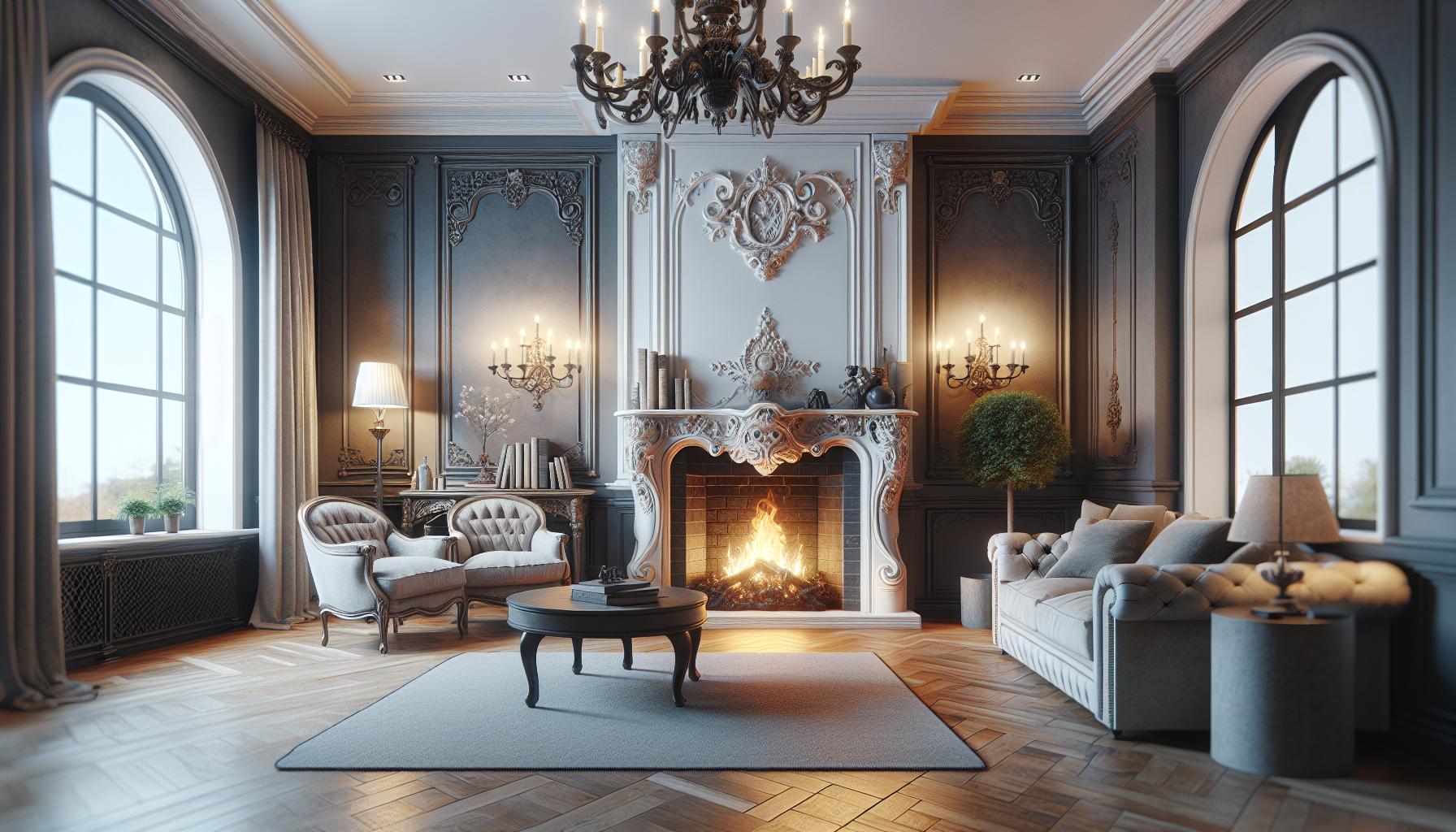
When stepping into a room, what’s the first thing that catches your eye? That’s the magic of a focal point in interior design. It’s the element that draws attention and sets the tone for the entire space. Whether it’s a stunning piece of art, a cozy fireplace, or a breathtaking view, a well-chosen focal point can transform any room from ordinary to extraordinary.
I’ve always believed that mastering focal point design is key to creating harmonious and inviting spaces. It not only anchors the room but also guides the flow and function, making it both aesthetically pleasing and practical. By strategically selecting and enhancing a focal point, you can create a sense of balance and purpose that resonates throughout the room.
Understanding the principles of focal point design can elevate your interior spaces, making them not just beautiful but memorable. Let’s explore how to harness this powerful design tool to its fullest potential.
Key Takeaways
- Creating a strong focal point in interior design is essential for setting the room’s tone and capturing the viewer’s interest, transforming an ordinary space into something extraordinary.
- A well-defined focal point serves as the anchor of a room, guiding its flow and function, and helping to establish balance and cohesion among various design elements.
- Key considerations in selecting a focal point include color, scale, texture, and materials, which impact its effectiveness and harmony with the overall room design.
- Popular focal points in interior design often include fireplaces, art and wall decor, and strategic furniture arrangements, each offering unique visual appeal and influence on the room’s ambiance.
- Techniques like strategic lighting, thoughtful color schemes, and highlighting architectural details can effectively emphasize a focal point, making it an integral feature of the room’s aesthetic.
- Addressing challenges in focal point design involves creative solutions to balance visual elements, adapt to spatial constraints, and incorporate personal style for customized, cohesive environments.
Focal Point Interior Design
Focal point interior design involves highlighting specific elements in a room to guide the eye and establish a clear center of interest. This technique isn’t just about decoration; it’s about creating balance and harmony within a space. A focal point should command attention but not overwhelm other elements in the room.
Identifying potential candidates, such as art pieces or architectural features like windows, forms the first step in selecting an appropriate focal point. Artworks, for instance, add color and personal expression while fireplaces offer a cozy, inviting atmosphere. Large windows framing scenic views connect indoor spaces with the outside world, providing natural light and a touch of nature.
Arranging furniture and decor in relation to the focal point enhances its impact. Chairs and tables oriented towards a fireplace, for example, encourage social interaction and create an intimate setting. Complementary colors and patterns further emphasize the focal area without competing for attention.
Lighting strategies like accent lighting can spotlight the focal point, creating depth and drawing attention to key elements. Layered lighting, including ambient, task, and accent lights, ensures that the entire space remains cohesive and functional.
Ultimately, the skillful use of focal point interior design transforms ordinary spaces into visually engaging environments that reflect personal style and enhance the room’s function.
Importance of a Focal Point

A focal point serves as the central element in interior design that draws attention and sets the room’s ambiance. By highlighting a specific area or item, such as a dramatic painting or a unique architectural feature, I can create visual interest and guide the viewer’s gaze. This strategic emphasis helps establish hierarchy, ensuring that the room doesn’t feel cluttered or overwhelming.
Recognizing the significance of a focal point enhances the spatial dynamics. When I utilize a dominant feature like a grand window with a view, it anchors the space and provides a natural reference point for arranging furniture and decor. This not only creates a sense of balance but also brings cohesion to various design elements.
A well-defined focal point assists in creating memorable spaces. In environments where functionality and aesthetics must coexist, such as a living room or office, the focal point acts as an organizational tool. It’s essential for me to leverage its influence to accentuate the room’s strengths, making it both inviting and purposeful.
Elements to Consider When Choosing a Focal Point

Selecting a focal point involves analyzing several design elements. Understanding these can ensure the space achieves a cohesive and engaging look.
Color and Contrast
Color and contrast significantly impact a focal point’s effectiveness. A bright or bold color draws attention, while contrasting shades enhance prominence. For example, a striking painting on a neutral wall instantly catches the eye. By choosing the right color scheme, it’s possible to create a dynamic focus that integrates with the overall design.
Scale and Proportion
Scale and proportion influence the balance of a room. A focal point must be appropriately sized to maintain harmony. Large elements, like an oversized couch, become natural centers of attention in vast spaces, while a smaller room benefits from moderate-sized features. Ensuring the focal point aligns with the room’s dimensions enhances visual equity.
Texture and Materials
Texture and materials add depth to focal points. A variety of textures, such as a plush rug, offers tactile interest and complements other room elements like smooth walls. The choice of materials, like wood or metal, can amplify the focus area, adding character and style. Consider how these elements work together to enrich the overall design narrative.
Popular Focal Points in Interior Design

In interior design, focal points play a crucial role in directing attention and setting the room’s tone. Several popular choices consistently stand out.
Fireplace as a Focal Point
Fireplaces often serve as a quintessential focal point in living spaces. A fireplace naturally draws the eye due to its central location, warmth, and potential for decorative mantel displays. Incorporating elements like a striking mantelpiece or dramatic tiling enhances this focus. When situated in the room’s architectural center, it anchors furniture arrangements around it, promoting a cozy and inviting atmosphere.
Artwork and Wall Decor
Art and wall decor add personality and interest to a room, often becoming immediate focal points. Large canvases, bold prints, or a gallery wall can inject color and creativity, capturing attention. These pieces should align with the room’s color palette and style to maintain harmony. Lighting, such as picture lights, can further emphasize artwork, enhancing its visual impact.
Furniture Arrangement
Furniture arrangement directly influences a room’s focal dynamics. Placing a prominent piece like a statement sofa or an elegant coffee table as a visual anchor creates a balance. Arranging seating in a way that directs attention toward other focal elements, like windows or art, facilitates natural flow. This strategic positioning makes the space feel intentional and cohesive, contributing to its overall ambiance.
Techniques for Highlighting a Focal Point
Successfully highlighting a focal point in interior design makes a room more visually engaging. By using specific strategies, I can ensure a focal feature stands out and enhances the overall space.
Lighting Strategies
Using lighting strategically directly impacts how a focal point is perceived. I often incorporate accent lighting, such as spotlights or track lighting, to illuminate and draw attention to the focal area. A dimmer switch allows me to adjust the light’s intensity, creating a dramatic effect when increased or a subtle ambiance when lowered. Wall-mounted fixtures or lamps can also effectively highlight artwork or architectural features.
Use of Color Schemes
Color schemes powerfully enhance a focal point’s visibility. I select bold or contrasting colors to make a specific element pop. For instance, a brightly colored piece of furniture against a neutral wall immediately captures attention. Painting an accent wall or incorporating colored decor items creates a deliberate focal area, ensuring that it doesn’t fade into the background.
Architectural Details
Architectural details naturally serve as focal points without much embellishment. I focus on highlighting features like exposed beams, intricate moldings, or unique window designs. To accentuate these elements, I might use contrasting materials or finishes to enrich their structural allure. Framing a window with curtains or showcasing a fireplace with custom mantels enhances its role as a central, eye-catching feature.
Challenges and Solutions in Focal Point Design
Identifying focal points poses significant challenges in design. Spaces often have multiple interesting elements, making it hard to choose one clear focal point. Overcoming this involves evaluating the room’s purpose and existing architectural features, then prioritizing based on visual impact and functionality.
Balancing focal points with surrounding decor requires careful planning. Too many competing elements lead to visual chaos. Solution: limit competing elements by emphasizing one central and a few supporting focal points. This adds clarity and prevents clutter.
Incorporating focal points in open-plan spaces often feels daunting. Walls and dividers aren’t available to create distinct zones. Instead, use furniture and rugs strategically to define areas and establish dominant focal points based on sightlines and traffic flow.
Adapting existing structures presents another challenge. Structural limitations sometimes hinder design intentions. Creativity and flexibility are vital in adapting focal points without altering the structure. Consider using mirrors, artwork, or plants to enhance existing points without significant modifications.
Achieving coherence in focal point lighting remains tricky. Inconsistent lighting can undermine the focal area’s impact. Coordinated lighting solutions, like layered or adjustable lighting systems, enhance focal elements while maintaining overall ambiance.
Customization poses a unique challenge due to mass-produced decor. Designs risk feeling impersonal. To solve this, personalize spaces with custom art, bespoke furniture, or unique fabrics, ensuring the focal point reflects individuality and taste.
Space’s Aesthetic and Functionality
Mastering focal point interior design is a powerful way to elevate any space’s aesthetic and functionality. By thoughtfully selecting and highlighting key elements, we can guide the eye and create a harmonious environment that resonates with personal style. Whether it’s through strategic lighting, bold colors, or unique architectural features, the right focal point can transform a room from ordinary to extraordinary. Embracing these principles allows us to design spaces that are not only visually appealing but also reflect our individuality, ensuring our homes are as unique as we are.
